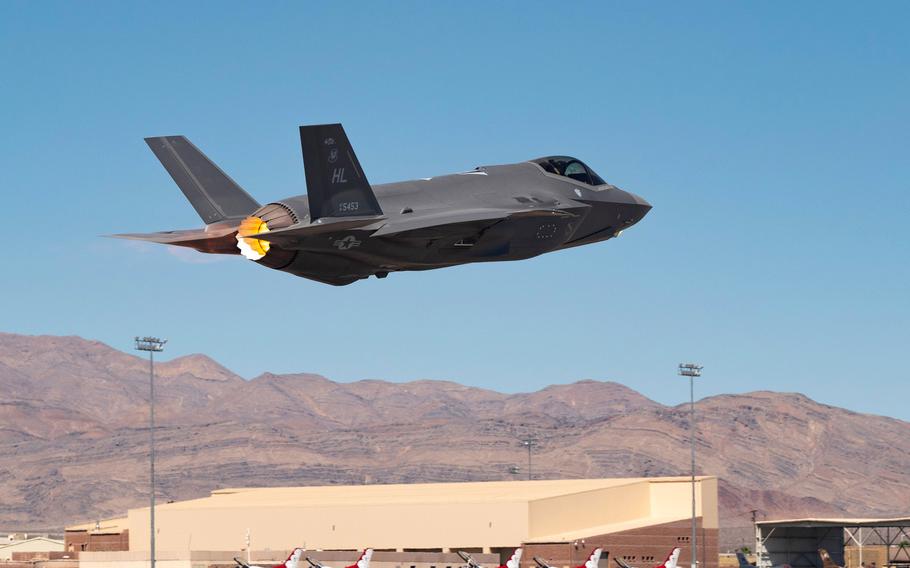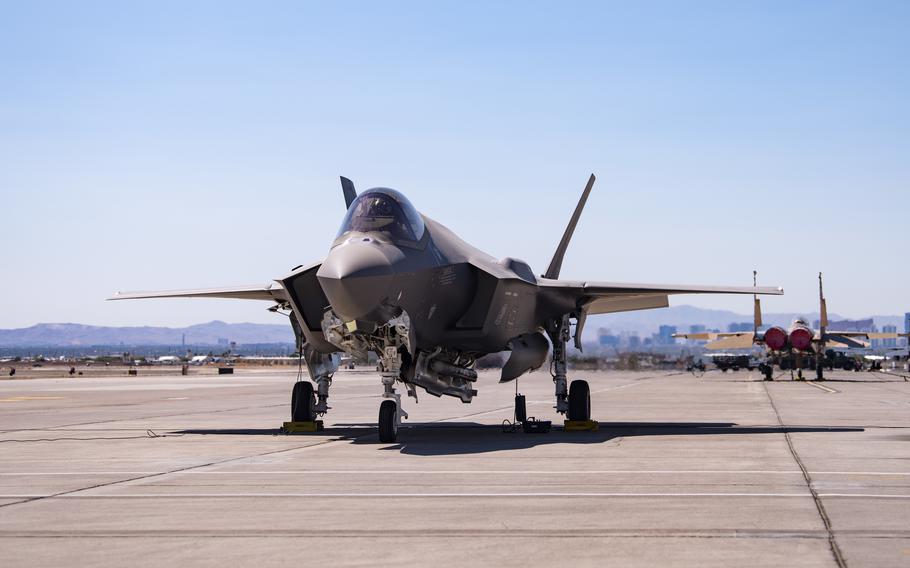
An F-35A Lightning II takes off to complete the final test exercise of the nuclear design certification process at Nellis Air Force Base, Nev., Sept. 21, 2021. (Zachary Rufus/U.S. Air Force)
An Air Force fighter jet slated to debut later this year in Europe passed a milestone when it dropped mock nuclear bombs during training flights designed to ensure its ability to fulfill NATO’s nuclear deterrence mission, the military said Monday.
The successful test of the F-35A Lightning II came as the 48th Fighter Wing, based at Britain’s RAF Lakenheath, reactivated the 495th Fighter Squadron last week for a new mission in Europe.
Ahead of the fighter model’s arrival at Lakenheath, two F-35As that took off from Nellis Air Force Base, Nev., completed a full weapon system demonstration, regarded as a graduation flight test for achieving nuclear certification, the F-35 Joint Program Office said.
Pilots from the Air Force’s 422nd Test and Evaluation Squadron twice dropped “high-fidelity, non-nuclear mock B61-12s,” with each drop at a different altitude and speed, the office said.

An F-35A Lighting II carrying a non-nuclear mock B61-12 bomb sits on the flight line at Nellis Air Force Base, Nev., Sept. 21, 2021. Two F-35A jets dropped the mock bombs in a demonstration that keeps the aircraft on track to be certified for nuclear deterrence missions, Air Force officials said. (Zachary Rufus/U.S. Air Force)
“The completion of this demonstration event keeps the F-35A on track to meet specific need dates for deploying the capability overseas,” it said.
The flights were the last of 10 guided releases of B61-12 test bombs performed by the F-35A.
The next step toward certification for real-world nuclear operations is technical analysis of test data to ensure that the bombs perform reliably and safely on the plane in all phases, the F-35 Joint Program Office said.
The new F-35 squadron at Lakenheath will consist of 27 aircraft and roughly 60 personnel, the Air Force said.
“The 495th has a proud history, and we’re excited to take the guidon forward to start building the foundation for the first USAF F-35As stationed in Europe,” Lt. Col. Ian D. McLaughlin, the squadron commander, said in a statement.